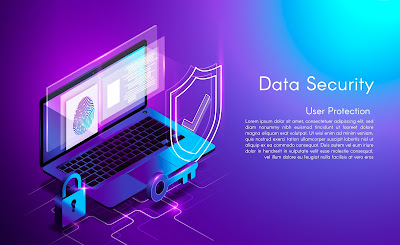Cybersecurity: The Importance of Protecting Your Data and Systems

In the rapidly evolving landscape of the digital age, cybersecurity remains a top concern for individuals, businesses, and governments alike. As technology advances, so do the tactics employed by malicious actors seeking to exploit vulnerabilities in networks, systems, and devices. This article explores some of the emerging trends in cybersecurity and highlights the measures being taken to combat these evolving threats.
-
Artificial Intelligence and Machine Learning in Cybersecurity: Artificial Intelligence (AI) and Machine Learning (ML) have emerged as powerful tools in cybersecurity defence. These technologies enable the automation of threat detection, incident response, and security analysis, allowing cybersecurity professionals to detect and mitigate potential threats faster and with greater accuracy. However, with AI being used by both defenders and attackers, the race to outsmart the other is intensifying, leading to the need for constant improvement and adaptation of AI-based cybersecurity solutions.
-
Internet of Things (IoT) Security: The proliferation of IoT devices has created a massive attack surface for cybercriminals. Connected devices, from smart home appliances to industrial systems, often lack robust security measures, making them susceptible to exploitation. Manufacturers and service providers are increasingly focusing on building secure-by-design devices, but challenges remain in updating older devices with security patches and ensuring end-user awareness of IoT security best practices.
-
Quantum Computing and Cryptography: The rise of quantum computing poses a potential threat to traditional cryptographic methods, as quantum computers could theoretically break current encryption algorithms. To safeguard against this future threat, researchers are actively working on developing quantum-resistant cryptographic techniques, known as post-quantum cryptography. Preparing for the advent of quantum computing is crucial to protecting sensitive data in the long run.
Cybersecurity is the practice of protecting systems, networks, and programs from digital attacks. It's a critical field in today's world, as our reliance on technology grows and the number and sophistication of cyberattacks increase.
There are many different aspects to cybersecurity, including:
- Prevention: This involves identifying and mitigating security risks before they can be exploited. This can include things like installing security patches, implementing strong passwords, and using two-factor authentication.
- Detection: This involves identifying and responding to security incidents as they occur. This can include things like monitoring network traffic for suspicious activity, using intrusion detection systems, and conducting incident response drills.
- Recovery: This involves restoring systems and data after a security incident. This can include things like having backups of data, using disaster recovery plans, and communicating with affected stakeholders.
Cybersecurity is an important field for both individuals and organizations. Individuals can protect themselves from cyberattacks by being aware of the risks, using strong passwords, and being careful about what information they share online. Organizations can protect themselves by implementing strong security measures, training their employees on cybersecurity, and conducting regular security assessments.
Here are some of the top cybersecurity challenges that organizations face today:
- Evolving threats: Cybercriminals are constantly developing new ways to attack organizations. This makes it difficult for organizations to keep up with the latest threats.
- The data deluge: Organizations are generating and storing more data than ever before. This makes it more difficult to protect data from unauthorized access.
- Cybersecurity awareness training: Many employees are not aware of the latest cybersecurity threats or how to protect themselves from them. This makes them easy targets for cybercriminals.
- The workforce shortage and skills gap: There is a shortage of skilled cybersecurity professionals. This makes it difficult for organizations to find and hire qualified cybersecurity staff.
- Supply chain and third-party risks: Organizations often rely on third-party vendors for critical services. These vendors may not have the same level of cybersecurity as the organization itself. This can create a security risk for the organization.
Cybersecurity is a complex and ever-changing field. However, by understanding the risks and taking steps to protect themselves, individuals and organizations can help to mitigate the threat of cyberattacks.
Here are some tips for improving your cybersecurity:
- Use strong passwords and change them regularly.
- Be careful about what information you share online.
- Keep your software up to date.
- Use a firewall and antivirus software.
- Be careful about opening attachments and clicking on links in emails.
- Back up your data regularly.
- Educate yourself about cybersecurity risks.
By following these tips, you can help to protect yourself from cyberattacks.
Conclusion:
As technology continues to advance, the cybersecurity landscape will evolve, demanding proactive and adaptable defense strategies. Collaboration between the private sector, government agencies, and the research community is vital to stay ahead of emerging threats. By understanding and addressing these trends, we can better safeguard our digital world and protect the integrity, confidentiality, and availability of data and systems.




0 Comments